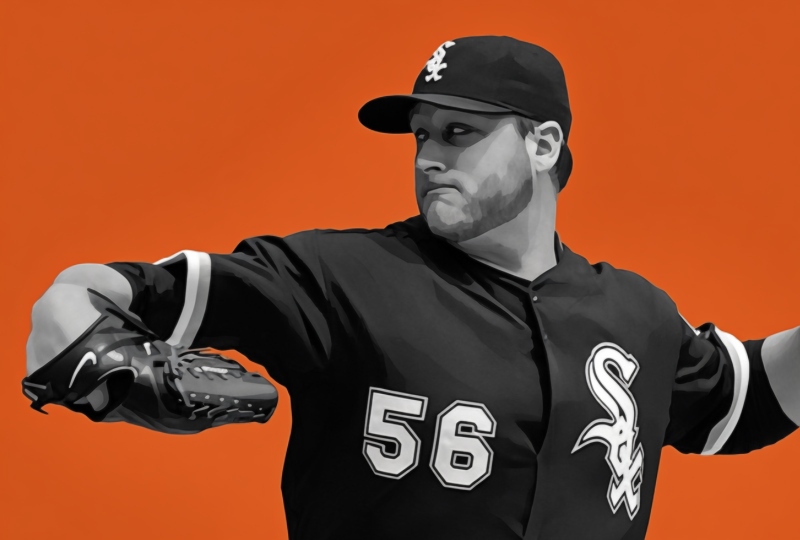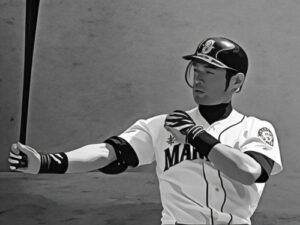For a fifth time, former pitcher Mark Buehrle will have his name in front of the voters for the Baseball Hall of Fame. So far, the left-hander has received between 5 and 11 percent support. That’s a far cry from the 75 percent needed for election.
There may be a path to Cooperstown for Buehrle, but it’s one few have traveled. Since the modern rules of voting for the Hall, only four candidates have clawed their way from as little as 11% support to eventually be elected by the baseball writers. Those players are:
- Bob Lemon (elected in 1976, 12th year on ballot)
- Lou Boudreau (elected in 1970, 10th year on ballot)
- Larry Walker (elected in 2020, 10th year on ballot)
- Scott Rolen (elected in 2023, 6th year on ballot)
Buehrle has potentially only six tries to get to 75%, including the 2025 ballot. Only Larry Walker and Bob Lemon had less than 20% support in their fifth appearance on a ballot, and eventually made it via the BBWAA. If Buehrle is to make a move, it has to happen with this ballot, at least to 20+ percent.
If Buehrle doesn’t gain momentum, he risks falling off the ballot (should he ever dip below 5%) or he could end up in a group with other pitchers who spent a maximum number of years on the ballot, but were never elected by the baseball writers. That group includes notables like Tommy John, Luis Tiant, Lew Burdette, Don Newcombe, Roy Face, and Don Larsen. Two others, Roger Clemens and Curt Schilling, also spent a maximum number of years on the BBWAA ballot, but have not been elected. For those two, and Andy Pettitte, who appears on the HOF ballot for a seventh time in 2025, there are very different reasons they have never been awarded a plaque.
Buehrle feels a lot more like he fits in a group with John, Tiant, and Burdette, than he does Jim Bunning, Bert Blyleven, or Jack Morris. That latter trio were pitchers who spent many years missing election by the BBWAA, but were later ushered in via the veterans committee.
Buehrle’s statistical credentials are not impressive. His 59.3 Career WAR falls short of the HOF average for pitchers, which is 73. His peak, measured by Jay Jaffe’s WAR7, was 35.7, which is well below the HOF average of 49.8 for pitchers.
The former left-handed pitcher never won a Cy Young Award, and in fact he only finished in the top five in voting once. His best showing in ERA was a 3rd place finish in 2005. Buehrle finished in the top five in his league in WAR by pitchers only twice. He was never a strikeout pitcher, either, and that fact underscores his major problem as a Hall of Fame candidate:
Mark Buehrle was not Roy Halladay or CC Sabathia, two pitchers who debuted in the same league at almost the exact some time. Buehrle was a pitch-to-contact pitcher who was extremely durable, and an excellent defensive player. He was an atypical ace: he didn’t throw the baseball past hitters; he basically kept them off-speed. He was always in the rotation, which made him reliable and valuable. But he was rarely elite. He suffered in comparison to the group of legendary pitchers who came along a few years after him: Justin Verlander; Zack Greinke, Clayton Kershaw, and Max Scherzer.
Our all-time pitcher rankings have Buehrle essentially lumped in a group with others from his era like Tim Hudson, Cliff Lee; and Cole Hamels. No one is breaking down the doors to demand any of these three pitchers be elected to the Hall of Fame. All four of them, including Buehrle, were excellent, and important pitchers in the history of baseball in the 21st century. But, like the others, Buehrle seems destined to sit outside of Cooperstown, as a sort of modern Billy Pierce: very good, but not good enough for immortaility.
Now some words on what made Buehrle an amazingly unique performer.
There are three ways to get batters out in the major leagues:
- Throw hard
- Use a gimmick pitch
- Pitch in front of great fielders
A pitcher who can do #1 is like gold: teams have sent scouts to dusty little towns where there are no train tracks, just to catch a glimpse of a kid who can bring the heat. The pitcher who uses a gimmick pitch is undervalued, baseball experts are suspicious of him, they have to be proven that there’s some way for the pitcher to get guys out. The practitioner of a knuckleball or an underhand “submarine” pitcher must fool batters again and again to earn a chance in The Show. Those pitchers who rely on #3 (great defense), usually don’t last long. They may defy the odds for a short time, but eventually big league hitters will punish them.
In the history of baseball there have been very few pitchers who violated this Rule of Three. If you chart the best pitchers in every era and look at what they did, you’ll find most of them are fastball pitchers: most of them exceed the league strikeout rate. If they don’t, they probably have an excellent pitch like a curve, screwball, forkball, or a spitball.
There’s a small group of pitchers who live outside these rules: left-handers with great control who don’t fan a lot of hitters, but get a lot of ground balls, hence a lot of double plays. These pitchers surrender a lot of hits, but few home runs. The prototypical pitcher in this group was Tommy John, who pitched for 26 years.
So, you’re probably thinking Mark Buehrle must be that type of pitcher, a Tommy John type. He’s not. Buehrle was left-handed, he had great control (walked two batters per nine innings), he struck out few batters compared to the league. Check, check, and check. But Buehrle was not a ground ball pitcher, he allowed about the average number of ground balls, in fact he was more of a flyball pitcher. Given the number of balls he allowed to be put in play and the fact that many were hit in the air, Buehrle shouldn’t have been as successful as he was. But he posted a career ERA+ of 117, meaning he allowed earned runs at a rate 17 percent below league average. He won more than 200 games, he pitched in a rotation for 15 years, and had a winning record 14 times.
Buehrle had a remarkably consistent career. Once he entered the White Sox rotation in 2001, he made at least 30 starts every season for 15 straight years. Only four other pitchers have done that, all of them guys you’ve heard of: Cy Young, Christy Mathewson, Warren Spahn, and Gaylord Perry. In 14 straight seasons he pitched at least 200 innings, joining the previously mentioned four plus Don Sutton, Phil Niekro, and Greg Maddux. Famous for not throwing between starts and shunning intense off-season workouts, Buehrle was extremely durable, and he was never on the disabled list.
It’s not immediately clear how Buehrle was able to sustain a long, successful career. He was an average looking lefty with average looking stuff, who only ever got one vote for the Cy Young Award, gave up loads of hits, and worked a lot of innings with runners on base. Yet, Buehrle won a lot of games and pitched one of the few perfect games in baseball history. How did he do it?
Buehrle did not pitch better with runners on base, and he did not have superior defensive teams behind him. But he had three things that worked heavily in his favor: (1) he was an excellent fielding pitcher, (2) he held runners on the base, and finally (3) Buehrle pitched very quickly. A common phrase in Chicago during his career was “When the pitcher is Buehrle, you’re going home early.”
It’s obvious why the first two points worked in his favor, but worth pointing out that per 32 starts, Buehrle allowed four stolen bases (he allowed only 59 stolen bases in his entire career). By comparison, Steve Carlton (who had a decent pickoff move) allowed 14 every 32 starts, and Fernando Valenzuela allowed 17. The third factor was beneficial because it kept batters in the box, disrupted their timing, and made them uncomfortable. Quite frankly, Buehrle did all the things that are hard to quantify and he did those things brilliantly. That’s why he is one of baseball history’s most remarkably unique pitchers.






